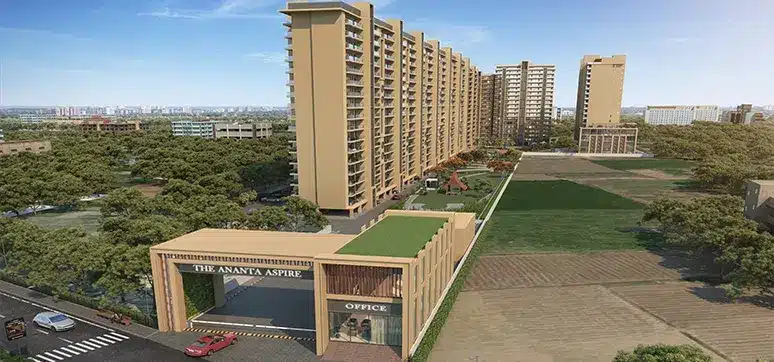IMPORTANCE OF SUSTAINABILITY IN ARCHITECTURE
Sustainability is an integral part of every architect in the present day. However, most architects are using this in their projects and of course pandemic has taught us how important the environment is for human nature. Sustainable building incorporates science and creativity drawing from the creations of nature, and it is founded on ecological philosophy. Changing or evolving people’s lifestyles, aspirations, and perceptions while avoiding harm to the environment is the primary goal of sustainable design.
Since most architecture before the Industrial Revolution was centered on modifying native materials and climate to suit human needs, it was mostly found in natural ecosystems. We can learn how our ancestors built sustainable architecture utilising various construction techniques and locally accessible resources by studying the history of architecture.
LEARNING FROM HISTORY
We have seen how humans used large constructions during the era of great civilizations without negatively impacting the ecosystem. Egypt is the most stable society in history, and they have set environmental rules in place that assist them in keeping the ecosystem in balance. The Indus Valley civilization is comparable the same as Egypt, except it made use of bricks that were burned in kilns. The dwellings had a North-South orientation and a rectangular floor plan with few apertures to maximise indoor thermal comfort while lowering the interior temperature.

Ancient civilizations have used the most sustainable architectures that they had seen in their tradition and culture. With the growing technology and discovery of new materials, somehow the modern era has lost the use of sustainable architecture which needs to learn from previous civilizations. From the cave design to the present modern world, one common thing we can resent is sustainable and we all together can make that happen.
IMPORTANCE OF SUSTAINABILITY IN FAÇADE AND FENESTRATION IN ARCHITECTURE
The façade and fenestration elements of a building significantly impact its energy efficiency, environmental impact, and overall sustainability. Here are some key reasons why sustainability in façade and fenestration is important in architecture:
Energy Efficiency: Properly designed facades and fenestration can optimise natural light and ventilation, reducing the need for artificial lighting and mechanical ventilation. This can result in energy savings and a more comfortable indoor environment.

Thermal Performance: Sustainable facades often incorporate high-performance insulation materials and glazing systems, contributing to better thermal performance. This helps in reducing heating and cooling energy consumption, enhancing the overall energy efficiency of the building.
Daylighting: Well-designed fenestration allows for effective daylighting, which not only reduces the need for artificial lighting during the day but also positively influences occupants’ well-being and productivity.

Material Selection: Sustainable facades prioritise the use of environmentally friendly and recycled materials. This helps in reducing the environmental impact of the building and promotes the responsible use of resources.
Renewable Energy Integration: Sustainable facades can be designed to integrate renewable energy technologies such as solar panels or solar shading devices. This allows buildings to generate some of their energy needs on-site, reducing reliance on non-renewable energy sources.
Climate Adaptation: Facades and fenestration must be designed to respond to local climate conditions. This includes considerations for shading in hot climates, maximising solar gain in colder climates, and incorporating features that enhance resilience against extreme weather events.
Durability and Maintenance: Sustainable designs often prioritise durable materials that require minimal maintenance. This not only reduces the environmental impact associated with replacement or frequent repairs but also contributes to the long-term sustainability of the building.
Indoor Environmental Quality: Sustainable facades contribute to better indoor air quality by allowing for natural ventilation and controlling pollutants. The inhabitants of the building benefit in terms of their health and well-being from this.
Lifecycle Analysis: Sustainable design considers the entire lifecycle of the building, including construction, operation, and eventual demolition or reuse. This holistic approach ensures that environmental impacts are minimised at every stage of the building’s life.
Regulatory Compliance and Certification: Many regions now have building codes and standards that encourage or mandate sustainable practices. Achieving certifications such as LEED (Leadership in Energy and Environmental Design) or BREEAM (Building Research Establishment Environmental Assessment Method) often requires a focus on sustainable façade and fenestration design.
In summary, sustainability in façade and fenestration design is essential for creating buildings that are energy-efficient, environmentally responsible, and contribute to the well-being of occupants. As the importance of sustainability continues to grow, architects are increasingly incorporating these principles into their designs to create buildings that are both aesthetically pleasing and environmentally conscious.
LATEST TRENDS IN SUSTAINABLE DESIGNS
Smart Buildings – The development of sustainable building practices is becoming more and more dependent on innovative green construction approaches. Smart buildings, which use state-of-the-art technology to increase energy efficiency and decrease waste, are at the forefront of this trend. These structures have automated technologies installed that enable real-time monitoring of energy consumption and allow modifications in response to conditions that change.

Another cutting-edge method that has become more and more well-liked in recent years is green roofing. These green-covered roofs offer several advantages, such as enhanced air quality, noise abatement, and insulation. Additionally, they aid in lessening the “heat island” effect in cities, where temperatures can differ significantly from those in nearby rural areas by several degrees.
Rainwater harvesting systems represent an additional instance of sustainable building methodologies. For use in toilet flushing, irrigation, and other non-potable applications, these devices gather and store rainfall. By decreasing the need for drinkable water, these technologies aid in the preservation of this priceless resource and lessen the burden on municipal water supply.
Greater advancements in the realm of sustainable building practices are likely to come as green construction methods gain greater traction. We may endeavour to create a more sustainable future for future generations by choosing eco-friendly construction techniques and placing a high priority on environmental care.
Green Building- With the emergence of green building technologies, the architecture industry has made significant strides towards more environmentally friendly building practices. Energy-efficient building materials and environmentally friendly construction techniques are two examples of these sustainable construction advances that assist in lessening the environmental impact of buildings.

More environmentally friendly building techniques are evolving as green building technologies advance. Smart buildings, for instance, optimize energy use and cut waste by utilizing cutting-edge technologies like automation and sensors. Rainwater harvesting systems and green roofs are also growing in popularity as ways to lessen runoff and encourage the sustainable use of resources.
The construction sector is heading towards a more environmentally friendly future with continuous efforts to encourage sustainable building methods. In addition to helping the environment, the application of these technologies and tactics also lowers energy-related costs, increasing the viability of sustainable construction projects for both customers and developers.














